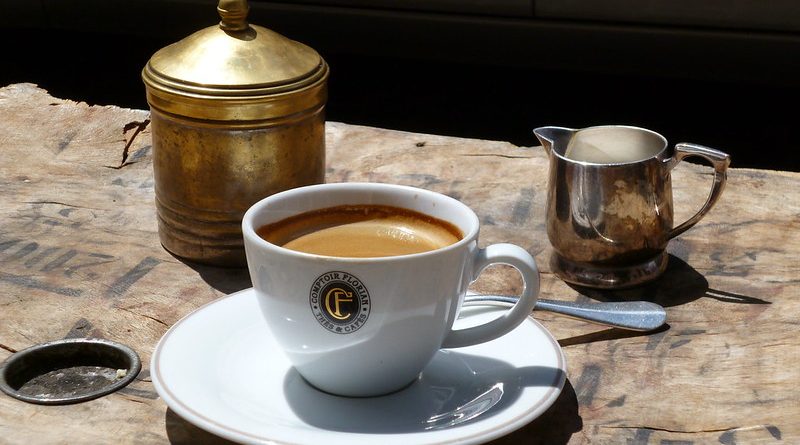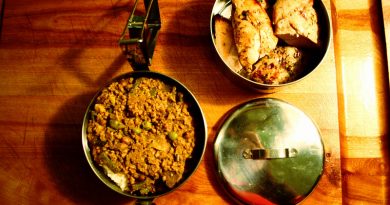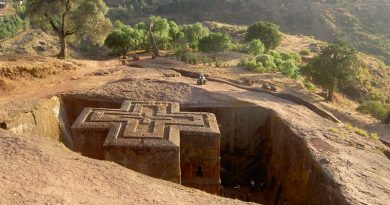Wild Goats and Dancing Dervishes: The Evolution of Coffee from Ethiopia
Food Facts
Where: Kaffa, Ethiopia, home of the Arabica coffee bean
Serving Suggestion: Must be drunk in an intricate ceremony, observe the hierachical structure and drink at least 3 sweet cups
Warning: Beware of caffeine overload!
Goats of legend
Ethiopia claims to be the original home of the Arabica coffee bean. Several legends contribute to the assertion. The most popular concerns the goat herder from Kaffa, where the plants still grow wild in the forest hills. After discovering his goats to be excited, rearing, and almost dancing on their hind legs, he noticed a few mangled branches of the coffee plant which was hung with bright red berries. He tried the berries himself and rushed home to his wife who told him that he must tell the monks. The monks tossed the sinful drug into the flames, an action soon to be followed by the smell we are all so familiar with now. They crushed the beans, raked them out of the fire, and distilled the stimulating substance in boiling water. After sitting up all night, they found a renewed energy to their holy devotions.
The most well documented case explaining the roots of the coffee plant are to be found in Arabic scientific documents dating from 800 A.D., referring to “buna”, the Ethiopian term for coffee. Mufti of Aden witnessed his men imbibing upon the substance in Addis Ababa in 1454 and, partaking in the tradition, it cured him of some ailment. The dervishes of Yemen, acting with Mufti’s approval began to incorporate coffee into their tradition, carrying it all the way to Mecca, where the first controversial coffee houses developed into social meeting places. Once planted in Arabic countries,buna became qua weh, eventually evolving to coffee. Or according to the Ethiopians, the plant derived its name from the Kaffa region.
Local flavour
You’ll find that each region’s coffee will taste slightly different, according to the growing conditions. Kaffa‘s forested hillsides, at 1,500 feet, provide larger trees to protect the coffee plants from the harsh sun. Harar is renowned for its longberry variety with its distinctive wine-like flavour and sharp acidic edge. Sidamo’s beans, known as Yirgacheffes, have an unusual flavour.
Ethiopian coffee does not have the excessive pungency or acidity of the neighboring Kenyan brands. It is much closer in character to the related Mocha variety of Yemen. The composition of its delicate and strong flavour is lost if it is high roasted. The coffea arabica strain of Ethiopia is the original bean to have grown there and the only one still grown and drunk there today. The washed beans fetch a high price on the world market, being of the most premium quality.
Ethiopia is Africa’s major coffee exporter, exporting only Arabica coffee, the species that accounts for 70% of the world’s coffee. The country produces 200,000 tons, of which a little less than half is for domestic consumption. The Ethiopian Coffee Export Enterprise is responsible for the livelihood of 12 million people, which controls 50% of Ethiopia’s coffee market. Its processing plants are found in Addis Ababa (where five plants process up to 500 tons a day) and in Dire Dawa. This figurehead company sells to Germany, Japan, the USA, France, and the Middle East – specializing in unblended and organic coffee.
Local tradition
Ethiopian monks had been chewing the bean for centuries, and Sudanese slaves brought to Arabia through Ethiopia, mixed the ground beans with butter to survive the arduous journey. The traditional energy sustaining food stuff of ground beans mixed with clarified butter (ghee), in the solid form of a chocolate like block is still eaten in Kaffa and Sidamo, major coffee producing regions. In Kaffa, even the drink is brewed with butter.
Sacred coffee ceremony
The coffee ceremony is performed all over Ethiopia and is an essential and beautiful element of the culture. If invited into a home to take part, it is impolite to retire until one has consumed at least three cups of the sweetened concoction. Conducted by a young girl in traditional costume, the ceremonial apparatus is placed on a bed of long grass. The green beans are roasted over charcoal. The smell mixes with the incense that burns throughout the ordeal. The beans are then ground with a pestle and mortar, then brewed in a black pot with a narrow spout. The coffee is strained through a fine sieve several times.
The first brew from the grounds is drunk by the older members of the entourage, the second by the younger adults, and the third straining by the children. The sweet coffee is drunk from handle-less cups and accompanied by a traditional snack food, such as popcorn.
Coffee is not all that healthy for people, so be warned not to over indulge. Farmers complain of gastritis, a result of their fondness for salted coffee.
By Alyssa Moxley




